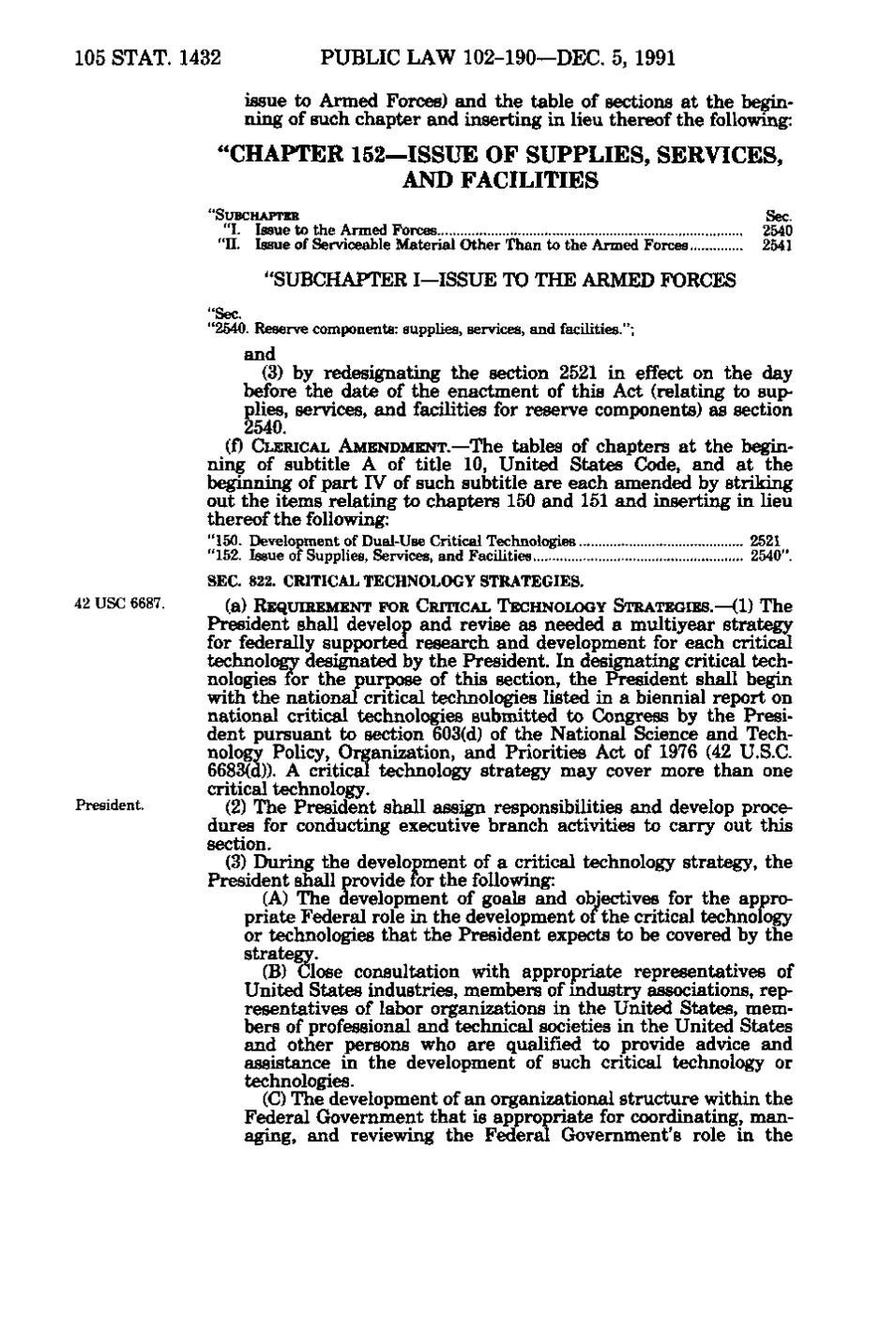105 STAT. 1432 PUBLIC LAW 102-190—DEC. 5, 1991 issue to Armed Forces) and the table of sections at the beginning of such chapter and inserting in lieu thereof the following: "CHAPTER 152—ISSUE OF SUPPLIES, SERVICES, AND FACILITIES "SUBCHAPTER Sec. "I. Issue to the Armed Forces 2540 "II. Issue of Serviceable Material Other Than to the Armed Forces 2541 "SUBCHAPTER I—ISSUE TO THE ARMED FORCES "Sec. "2540. Reserve components: supplies, services, and facilities."; and (3) by redesignating the section 2521 in effect on the day before the date of the enactment of this Act (relating to supplies, services, and facilities for reserve components) as section 2540. (f) CLERICAL AMENDMENT.—The tables of chapters at the beginning of subtitle A of title 10, United States Code, and at the beginning of part IV of such subtitle are each amended by striking out the items relating to chapters 150 and 151 and inserting in lieu thereof the following: "150. Development of Dual-Use Critical Technologies 2521 "152. Issue of Supplies, Services, and Facilities 2540". SEC. 822. CRITICAL TECHNOLOGY STRATEGIES. 42 USC 6687. (a) REQUIREMENT FOR CRITICAL TECHNOLOGY STRATEGIES,—(1) The President shall develop and revise as needed a multiyear strategy for federally supported research and development for each critical technology designated by the President. In designating critical technologies for the purpose of this section, the President shall begin with the national critical technologies listed in a biennial report on national critical technologies submitted to Congress by the President pursuant to section 603(d) of the National Science and Technology Policy, Organization, and Priorities Act of 1976 (42 U.S.C. 6683(d)). A critical technology strategy may cover more than one critical technology. President. (2) The President shall assign responsibilities and develop procedures for conducting executive branch activities to carry out this section. (3) During the development of a critical technology strategy, the President shall provide for the following: (A) The development of goals and objectives for the appropriate Federal role in the development of the critical technology or technologies that the President expects to be covered by the strate^. (B) Close consultation with appropriate representatives of United States industries, members of industry associations, representatives of labor organizations in the United States, members of professional and technical societies in the United States and other persons who are qualified to provide advice and assistance in the development of such critical technology or technologies. (C) The development of an organizational structure within the Federal Government that is appropriate for coordinating, managing, and reviewing the Federal Government's role in the
�
